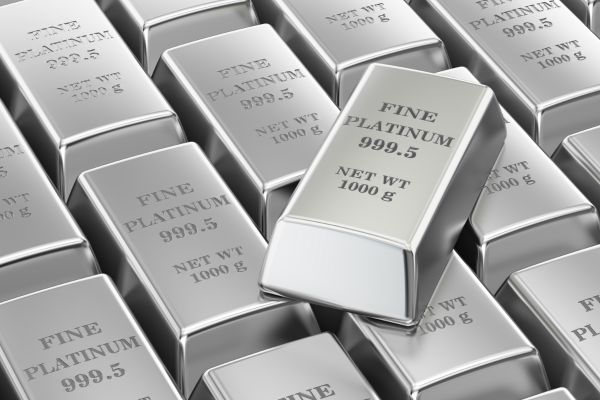5 Reasons Why You Should Buy Platinum Bars in 2025
IPlatinum has long been recognized as one of the world’s most valuable and coveted precious metals. Its rarity, utility, and enduring appeal make it an attractive option for investors seeking tangible assets. As we move through 2025, there are compelling reasons to consider adding platinum coins and bars to your investment portfolio. Unlike gold and silver, platinum offers a unique blend of industrial demand and scarcity that distinguishes it in the world of precious metals.
Whether you’re diversifying your holdings or seeking a physical asset with real-world applications, here are five key reasons why purchasing platinum coins and bars in 2025 may align well with our investment goals.
1. Platinum’s Rarity and Scarcity
As outlined in our Investor Guide, Platinum is significantly rarer than gold. According to the World Platinum Investment Council, “Platinum is one of the rarest metals, occurring at very low concentrations in the earth’s crust. It is 30 time rarer than gold.” This scarcity contributes to its desirability as an investment-grade metal. For those seeking exclusivity in their asset allocation, platinum coins and bars represent access to one of the rarest precious metals on Earth.
Most platinum is sourced from just a few regions, primarily South Africa and Russia. Supply is tightly constrained, and mining challenges or geopolitical factors in these areas can influence availability. While no investment is risk-free, the limited supply of platinum adds an element of rarity that is especially attractive to long-term holders of physical assets.
Owning platinum coins and bars allows investors to secure a portion of a finite resource, which may provide portfolio diversification rooted in physical scarcity.
Recently, Ole Hansen, Head of Commodity Strategy at Saxo Bank, provided compelling analysis in his May 20, 2025 article titled “As Gold Pauses, Is Platinum Ready to Shine for Investors?”. As Hansen notes, the gold-to-platinum price ratio has widened dramatically in recent years—from near parity to a recent peak of 3.6:1. While that ratio has since narrowed to 3.2:1, it still reflects a historic undervaluation of platinum relative to gold. For context, that means one ounce of gold now costs more than three ounces of platinum.
This pricing gap underscores platinum’s current affordability for investors looking to acquire physical assets—especially coins and bars—without the premium often attached to gold.
2. Expanding Industrial Applications
Platinum isn’t just a precious metal—it’s a critical component in many industrial processes. It’s widely used in catalytic converters to reduce vehicle emissions, in electronics for its conductivity, and increasingly in clean energy technologies such as hydrogen fuel cells.
As industries worldwide focus on decarbonization and sustainable technologies, demand for materials like platinum remains relevant. Whether in automotive innovation or green energy, platinum plays a supporting role in systems designed to meet evolving regulatory and environmental standards.
Holding platinum coins and bars gives investors exposure to a metal with real-world utility—one that is embedded in the infrastructure of innovation and industrial advancement.
3. A Tangible Asset in Uncertain Economic Times
Periods of economic instability often drive investors to consider physical assets. Platinum coins and bars offer a form of wealth that exists independently of digital systems, financial institutions, or third-party guarantees.
As a tangible investment, platinum can be stored securely, held directly, and accessed without reliance on technology or intermediaries. This appeals to investors who prioritize personal control and security, particularly during periods of inflation, market volatility, or geopolitical tension.
Compared to paper or digital assets, the physical nature of platinum can offer a reassuring presence in a diversified financial strategy—especially for those who value concrete stores of value.
4. Portfolio Diversification with a Unique Precious Metal
While gold and silver tend to dominate the conversation around precious metals, platinum offers a distinct profile. It’s rarer than gold, carries a wide range of industrial uses, and doesn’t always move in lockstep with other metals.
Adding platinum coins and bars to a portfolio introduces a level of diversification that may help reduce overall risk. Because platinum is influenced by both investment trends and industrial activity, it can behave differently than traditional equities, bonds, or even other commodities.
Including platinum in your holdings can round out a well-balanced strategy, especially for investors who seek to reduce exposure to more correlated or speculative assets.
5. Flexibility, Liquidity, and Accessibility
Platinum is available in a variety of forms, with platinum coins and bars being the most common and accessible for individual investors. Coins, often minted by government mints, offer recognized purity and ease of resale. Bars, available in different weights, provide flexibility for varying budgets and storage preferences.
Both coins and bars are relatively liquid compared to some alternative assets. While platinum doesn’t trade as frequently as gold, there is an active market for buying and selling, especially through reputable dealers and vault services.
For those seeking a physical investment that can be stored privately or held in a secure facility, platinum offers options for accessibility and control.
Conclusion
Platinum remains a standout in the world of precious metals due to its rarity, industrial utility, and physical presence. Whether you’re a seasoned investor or just beginning to build a robust portfolio, platinum coins and bars offer tangible peace of mind and a legacy-worthy asset that has stood the test of time. With current economic conditions pointing toward continued uncertainty, now may be one of the most opportune times to consider adding platinum coins and bars to your financial strategy.DIRA combines long-term wealth preservation with tax efficiency, making it an increasingly attractive option for forward-thinking investors.
